Abstract
Techniques for culturing, harvesting, and testing bacteria to evaluate bactericidal chemicals for swimming pools are described. Concentrations of 25, 50, and 100 mg of the chlorine stabilizer cyanuric acid per liter increased the time required for a 99% kill of Streptococcus faecalis by 0.5 mg of chlorine per liter at pH 7.4 and 20 C from less than 0.25 min without cyanuric acid to 4, 6, and 12 min, respectively. The effect of concentrations of ammonia nitrogen in the range found in swimming pools on the rate of kill of 0.5 mg of chlorine per liter and of chlorine plus cyanuric acid was tested. At concentrations of ammonia nitrogen greater than 0.05 mg per liter, faster rates of kill of S. faecalis were obtained with 100 mg of cyanuric acid per liter plus 0.5 mg of chlorine per liter than with 0.5 mg of chlorine per liter alone. When water samples from four swimming pools with low ammonia levels were used as test media, 0.5 mg of added chlorine per liter killed 99.9% of the added S. faecalis in less than 2 min, but water from a pool with a large number of children required 60 to 180 min of treatment.
Full text
PDF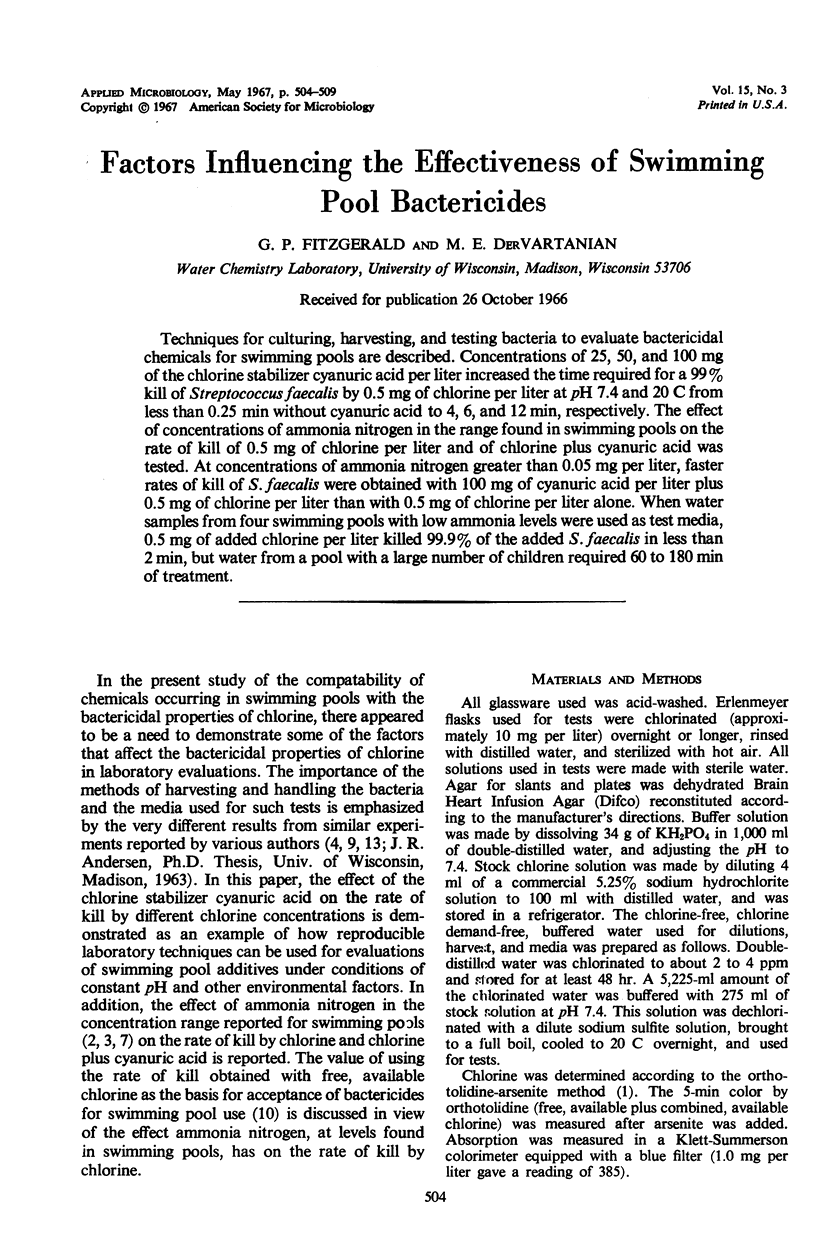
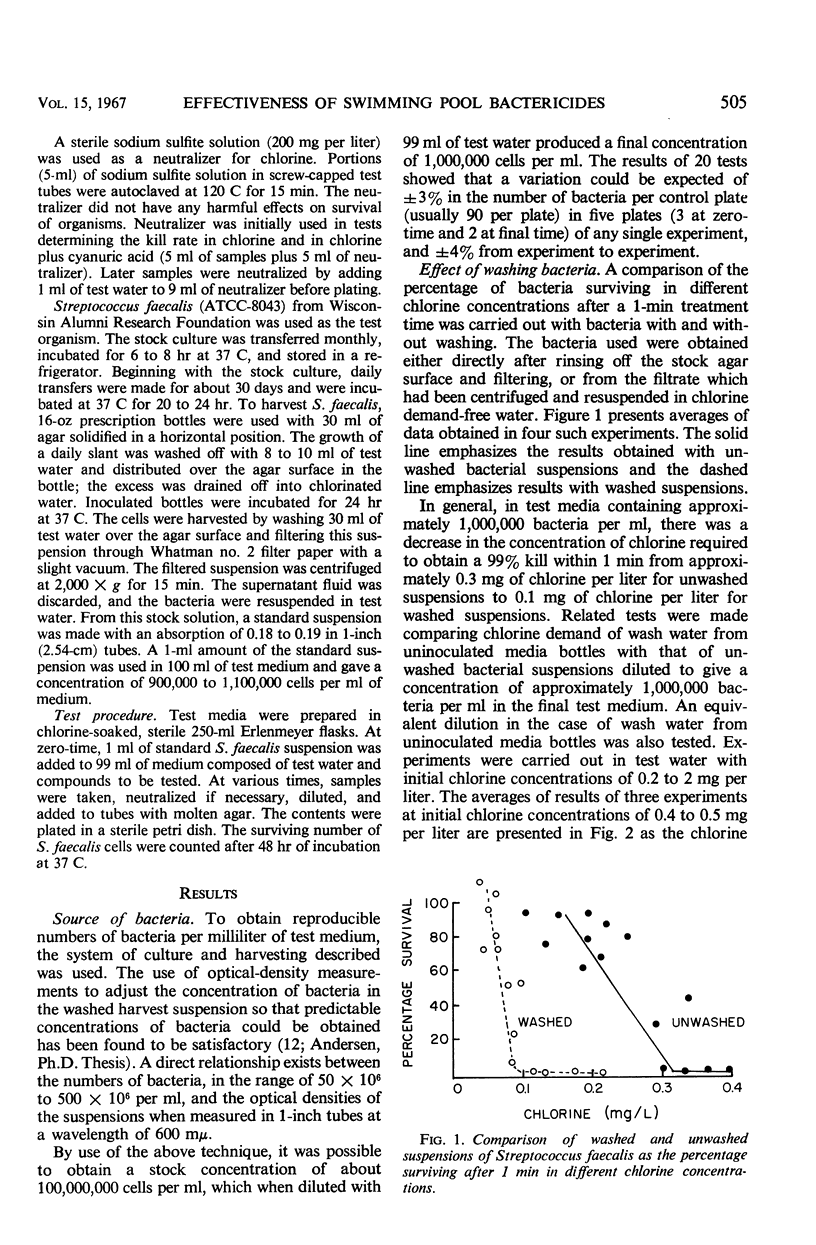
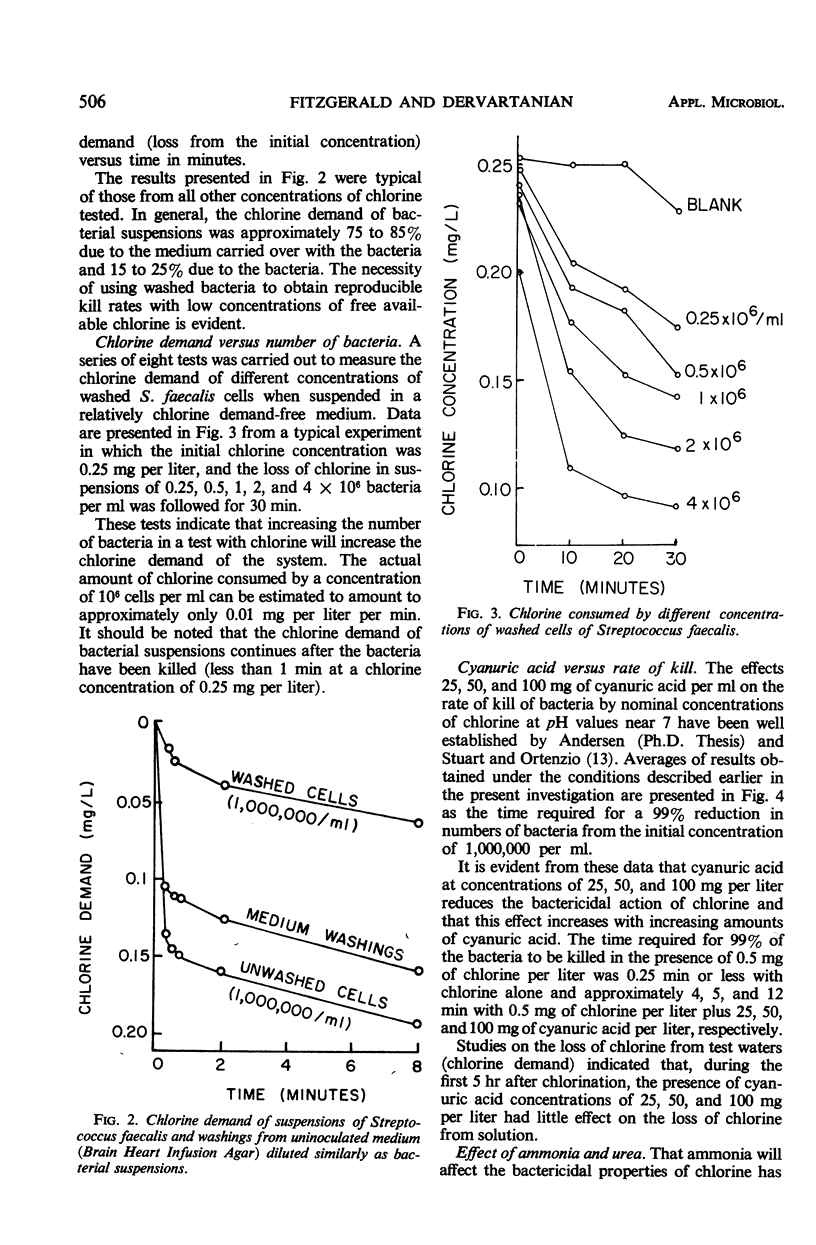
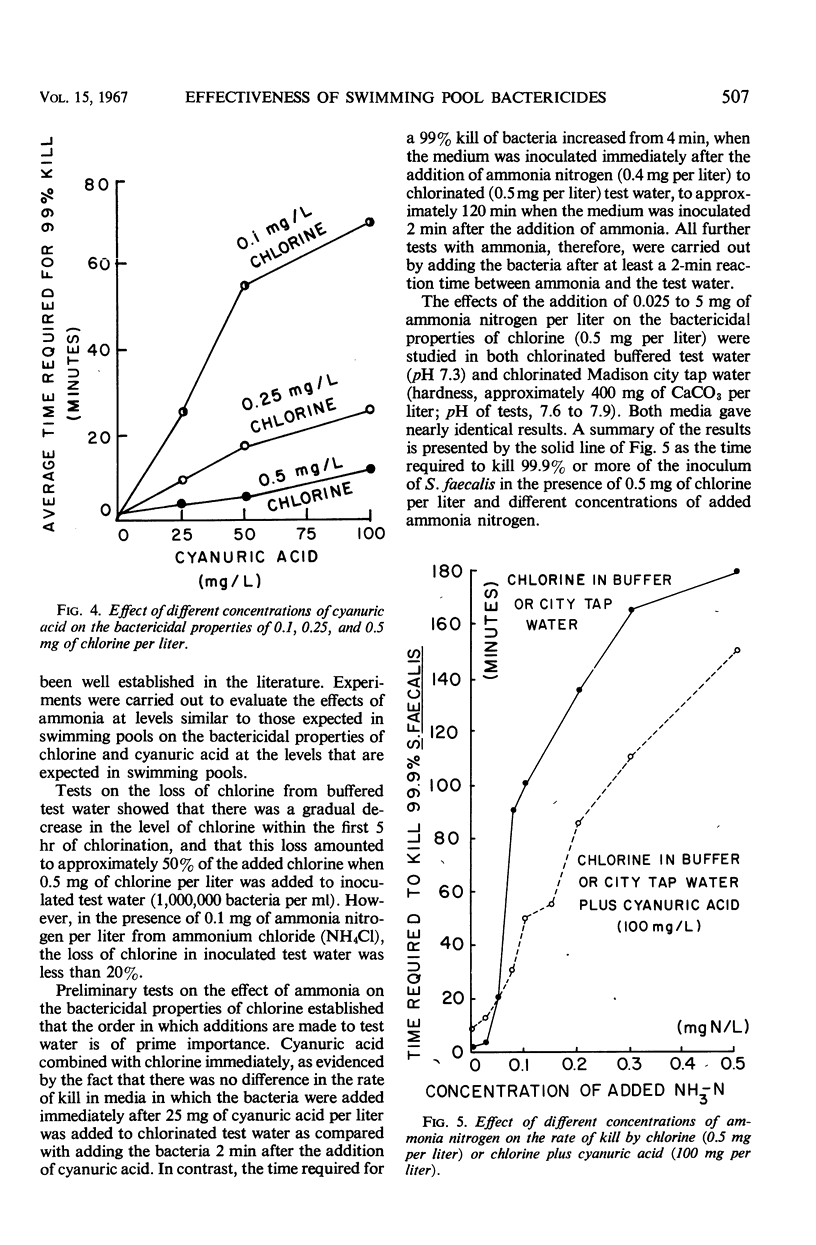
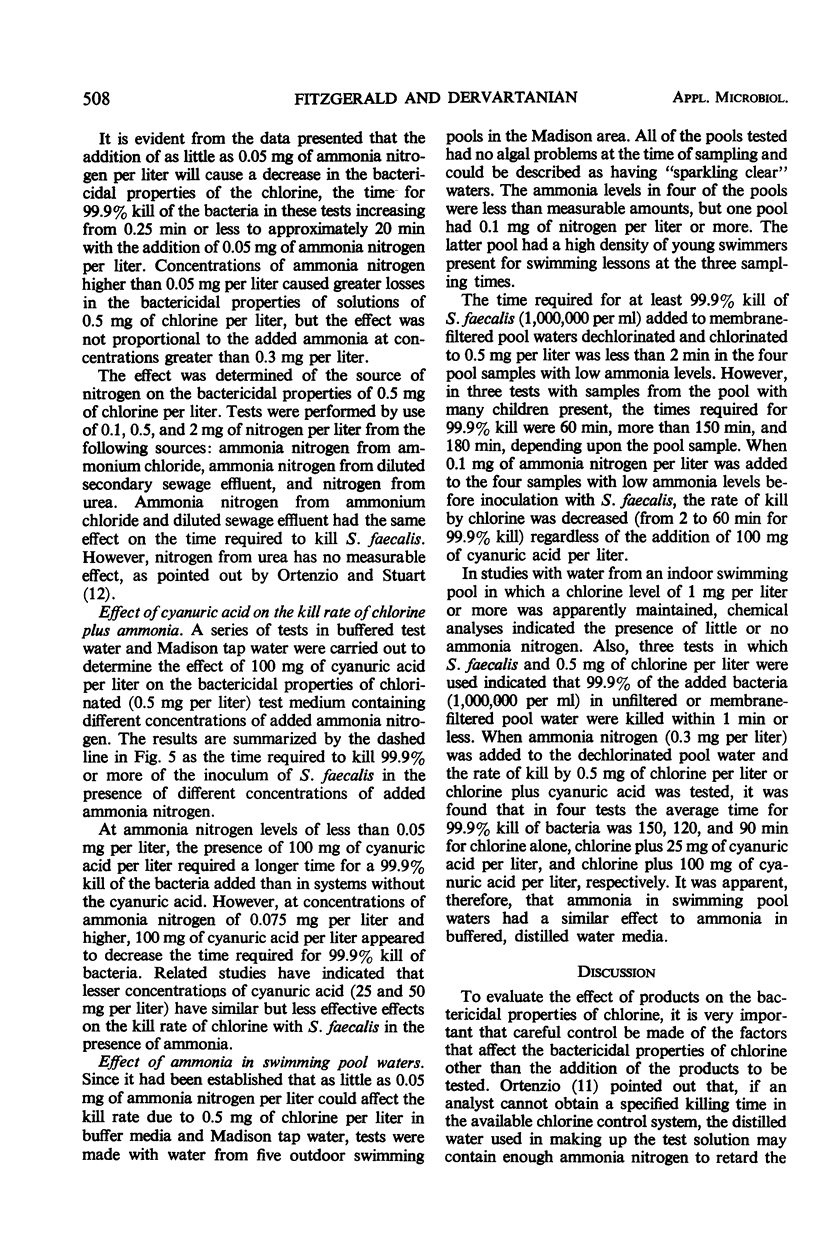
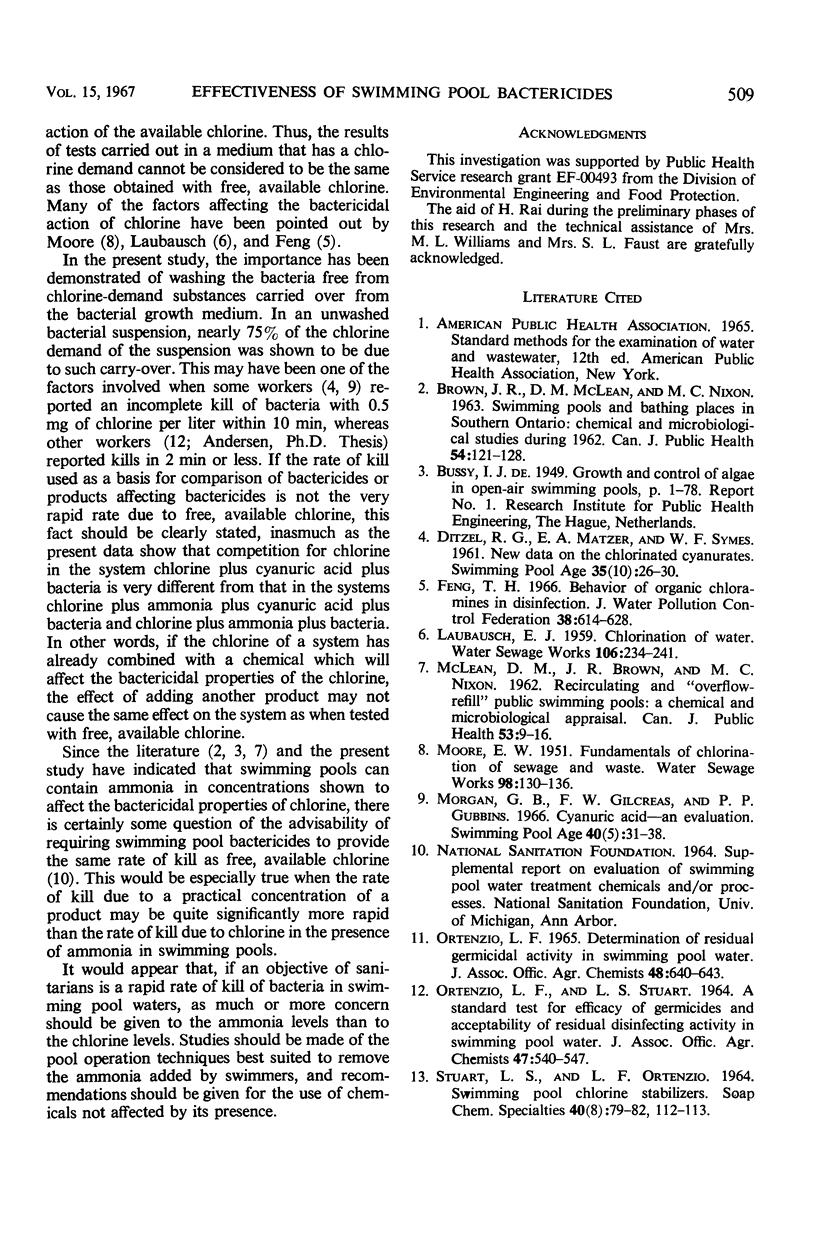
Selected References
These references are in PubMed. This may not be the complete list of references from this article.
- BROWN J. R., McLEAN D. M., NIXON M. C. Swimming pools and bathing places in southern Ontario: chemical and microbilogical studies during 1962. Can J Public Health. 1963 Mar;54:121–128. [PubMed] [Google Scholar]
- Tsuan Hua Feng Behavior of organic chloramines in disinfection. J Water Pollut Control Fed. 1966 Apr;38(4):614–628. [PubMed] [Google Scholar]


